Mizuhiki Art: The Beautiful Knots on Holiday Gifts
The Ancient Japanese Art Of Knot-Tying
Learn how you can enjoy mizuhiki this Christmas and New Year’s in Japan.
Mizuhiki is the ancient Japanese art of knot-tying. Since the Asuka Period, gifts have been decorated with rice paper cords, which are handcrafted into beautiful, intricate designs. Nowadays, mizuhiki adorns both traditional and contemporary holiday gifts as well as decorations.
The History of Mizuhiki
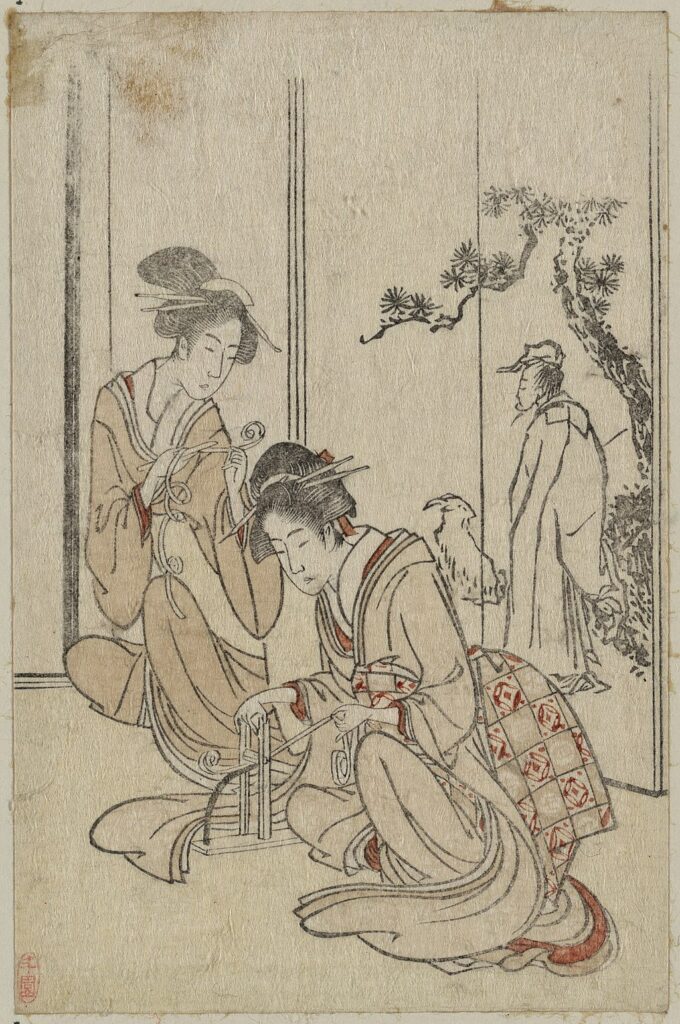 © Photo by Wikimedia Commons: Katsushika, Hokusai, 1760-1849
© Photo by Wikimedia Commons: Katsushika, Hokusai, 1760-1849The gracefully swirling mizuhiki seen on holiday gifts and New Year’s decorations originated from motoyui—strong, flexible paper cords used to tie up hair into traditional topknots. As the samurai era faded, the skills used to create motoyui were transformed into an art form, encompassing vibrant colors and decorative shapes. It has been said that after an elegant red and white design was presented to the Emperor, mizuhiki gained favor in the world of gift-giving.
An abundance of pure water and kozo (the Japanese paper mulberry tree) was found in the town of Iida in Nagano, Japan. Combined with its dry climate, this region fostered a comfortable environment for the production of paper cords. Today, 70% of Japan’s mizuhiki materials come from Iida, greatly helping to preserve this ancient craft.
Japanese and Western-style Gift Wrapping
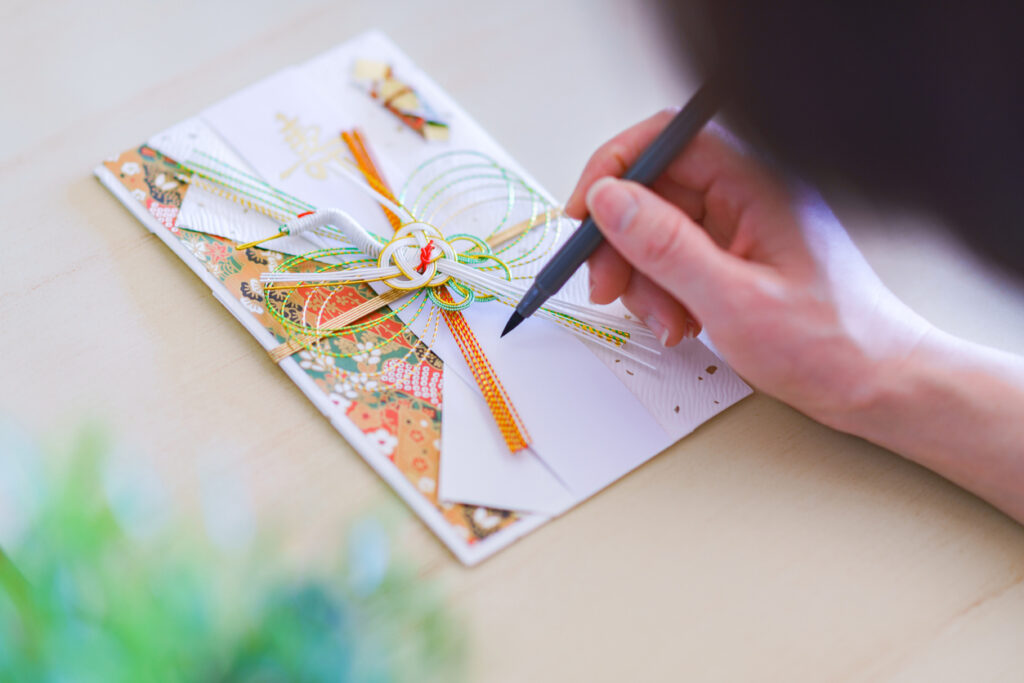 © Photo by iStock: show999
© Photo by iStock: show999In Japan, mizuhiki is more than just a decorative string for wrapping presents. While the big, beautiful ribbons of the West create a sense of joy and excitement, mizuhiki creates a sense of care and thoughtfulness. It acts as a seal, promising that the gift has remained unopened. It also acts as an amulet, warding off bad spirits. Most importantly, mizuhiki knots symbolize the connection between the gift giver and receiver, creating strong ties between them.
Mizuhiki’s precise and artful aesthetic makes it perfect for formal gift exchanges. It is often tied around a gift box or envelope, with colors and styles chosen to convey a specific sentiment. Traditional motifs, including cranes and turtles, add layers of meaning. Bows can also be created from mizuhiki and wrapped around holiday presents, similar to ribbons.
Mizuhiki for the Holidays
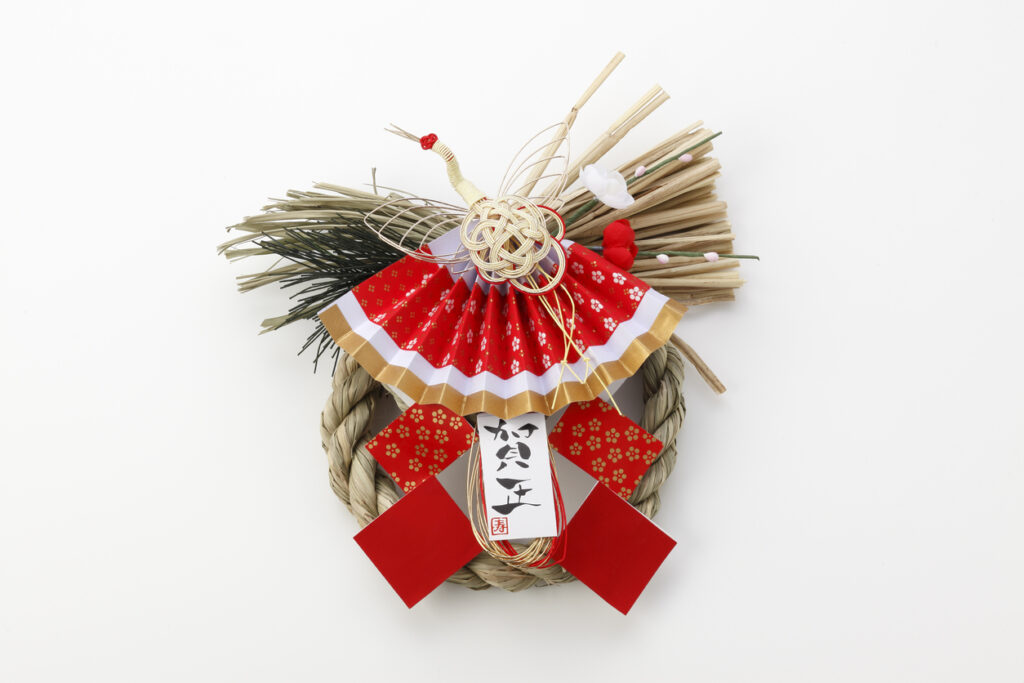 © Photo by iStock: studiocasper
© Photo by iStock: studiocasperFor centuries, mizuhiki has been a part of New Year celebrations in Japan, symbolizing prayers and good wishes for the new year. Traditional New Year’s decorations such as shimekazari (sacred rice straw decorations), kagami mochi (mirror-shaped rice cakes) and kodamatsu (pine and bamboo decorations) are often adorned with mizuhiki designs that delicately curve and twist, forming mesmerizing shapes. Mizuhiki is also found on pochibukuro, a small paper envelope used to gift money to children on New Year’s Day. Imaginative and charming mizuhiki resembling zodiac animals, such as a dragon’s face for the 2024 Year of the Dragon, can also be discovered.
In modern-day Japan, you can find all sorts of mizuhiki Christmas and New Year decorations. Paper cords are freely shaped into festive designs like snowflakes, reindeer and evergreen trees. One simple design that can be made at home is a mizuhiki Christmas wreath. Cords dyed in deep reds, forest greens and shimmering golds can be twisted into a circular arrangement and form the base of a wreath. The wreath can then be embellished with pine and a simple plum or awaji knot. With cords now available in a myriad of shades, metallic films, glossy sheens or matte finishes, the possibilities are endless. Tokyo Station and department stores around Tokyo have displayed large-scale Christmas trees made from a thousand mizuhiki ornaments.
Auspicious Colors, Designs and Knotting Techniques
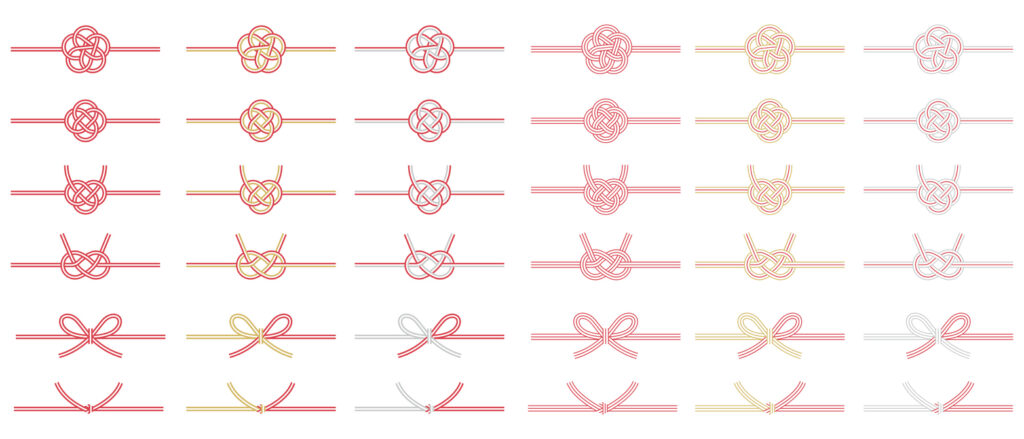 © Photo by iStock: ankomando
© Photo by iStock: ankomandoTraditionally, the color, design and knotting technique used in a mizuhiki piece are carefully selected to convey specific meanings. An odd number of strands are used for celebrations while even numbers are reserved for commemorations. Color combinations such as gold and silver signify joyous occasions while black and white denote more somber events. Knotting styles like musubi-kiri (a tough knot that is difficult to untie) are used for events one might hope does not occur multiple times, such as a wedding or funeral. Easily untied knots, such as the chou-musubi (butterfly knot), are used for events that can happily reoccur, such as academic ceremonies, career milestones and the birth of a baby.
For New Year’s in Japan, one of the common mizuhiki knot styles used is the awaji-musubi. The awaji-musubi is tied tightly and cannot be easily untied, symbolizing everlasting good fortune for the year to come. Celebratory mizuhiki are likely to have three, five or seven strands bundled together, but the choice of knot, size, color and strand number may depend on regional traditions and personal preferences.
Today, artisans in Japan continue to create jewelry, accessories and home decor items using mizuhiki, including festive ornaments. Tokyo Mizuhiki is one such shop in Tokyo that sells artful mizuhiki items and hosts workshops teaching knot-tying techniques. Whether you are decorating your living space, getting presents ready or looking to add a touch of artful elegance to your ensemble, you’ll encounter both traditional and contemporary expressions of mizuhiki art throughout Japan during the holiday season.
Will you be using mizuhiki this holiday season?













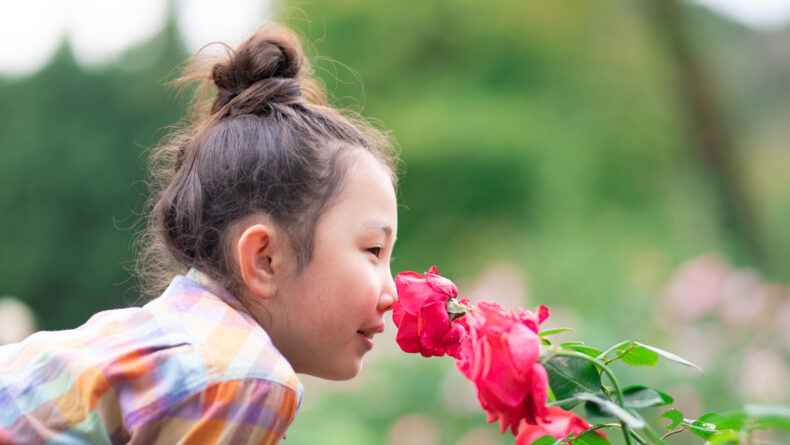


I can tie many of these knots. It would be lovely to be able to buy the materials and maybe see some diagrams and instructions on using them for gift parcels